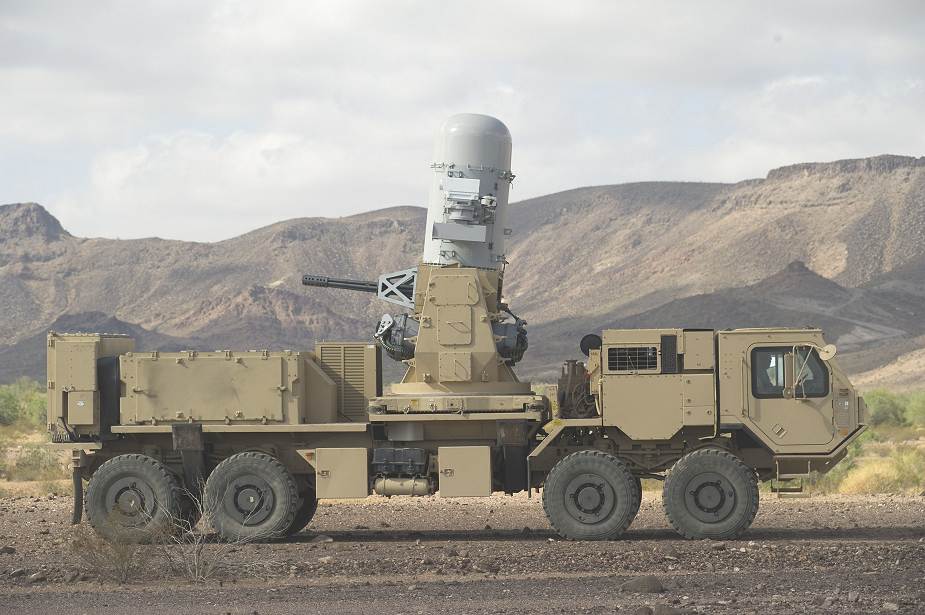Counter rocket, artillery, and mortar, abbreviated C-RAM or counter-RAM, is a set of systems used to detect and/or destroy incoming rockets, artillery, and mortar rounds in the air before they hit their ground targets, or simply provide early warning.

The Counter Rocket Artillery and Mortar system, aka C-RAM, dumps 20 mm rounds into the sky at a rate of 75 rounds per second.
C-RAM is effectively a land version of weapons such as the Phalanx CIWS radar-controlled rapid-fire gun for close in protection of vessels from missiles.
C-RAM is an initiative taken in response to an operational needs statement made by the Multinational Force Iraq (MNF-I). The directive arose in response to the increasing number of casualties caused by attacks using rockets, artillery, and mortars in Iraq. The land-based Phalanx B was subsequently deployed in Iraq in the summer of 2004. It protected the Green Zone and Camp Victory in Baghdad, Joint Base Balad near Balad, Iraq, and was also deployed by the British Army in southern Iraq.
The C-RAM is designed to engage and destroy incoming threats such as missiles, mortars, and rockets. Based on the system used by the navy phalanx system, the C-RAM is a radar assisted Centurion multi-barrel rotary cannon.
The 20mm Land-Based Phalanx Weapon System (also called C-RAM) is a land-based variant of the U.S. Navy’s Phalanx close-in weapon system, a radar-controlled rapid-fire gun for close-in protection of vessels from missiles.
Both use a forward-looking infrared (FLIR) camera to allow their operators to visually identify incoming fire before opening fire. But while naval Phalanx systems fire tungsten armor-piercing rounds, the C-RAM uses the 20mm HEIT-SD (high-explosive incendiary tracer, self-destruct) ammunition, originally developed for the M163 Vulcan air defense system.

These rounds explode on impact with the target, or on tracer burnout, thereby greatly reducing the risk of collateral damage from rounds that fail to hit their target.In the video below US troops conduct a live fire test with the C-RAM.





